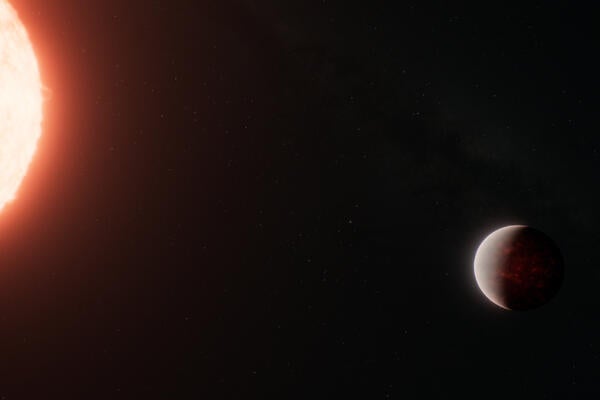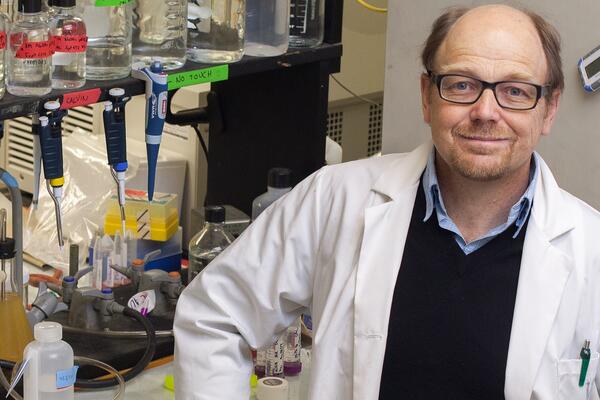
Groundbreaking technique yields important new details on possible ‘fifth force’
Researchers uncovered new information about an important subatomic particle and a long-theorized fifth force of nature

Researchers uncovered new information about an important subatomic particle and a long-theorized fifth force of nature
By Media RelationsA group of researchers have used a groundbreaking new technique to reveal previously unrecognized properties of technologically crucial silicon crystals and uncovered new information about an important subatomic particle and a long-theorized fifth force of nature.
The research was an international collaboration conducted at the National Institute of Standards and Technology (NIST). Dmitry Pushin, a member of the University of Waterloo’s Institute for Quantum Computing and a faculty member in Waterloo’s Department of Physics and Astronomy, was the only Canadian researcher involved in the study. Pushin was interested in producing high-quality quantum sensors out of perfect crystals.
By aiming subatomic particles known as neutrons at silicon crystals and monitoring the outcome with exquisite sensitivity, researchers were able to obtain three extraordinary results: the first measurement of a key neutron property in 20 years using a unique method; the highest-precision measurements of the effects of heat-related vibrations in a silicon crystal; and limits on the strength of a possible “fifth force” beyond standard physics theories.
In collaboration with researchers from Japan, the U.S. and Canada, the latest work resulted in a fourfold improvement in precision measurement of the silicon crystal structure factor.
Pushin, whose research specializes in neutron physics and interferometry, was instrumental in collecting neutron data and chemically etching samples, which led to examining unexplored forces beyond Standard Model.
“This was a multi-year experiment, and we had great results that are technically exciting and opens the door to future technologies,” said Pushin.
The Standard Model is currently the widely accepted theory of how particles and forces interact at the smallest scales. But it’s an incomplete explanation of how nature works, and scientists suspect there is more to the universe than the theory describes.
The Standard Model describes three fundamental forces in nature: electromagnetic, strong and weak nuclear force. Each force operates through the action of “carrier particles.” For example, the photon is the force carrier for the electromagnetic force. But the Standard Model has yet to incorporate gravity in its description of nature. Furthermore, some experiments and theories suggest the possible presence of a fifth force.
The researchers are already planning more expansive pendellösung measurements using both silicon and germanium. They expect a possible factor of five reduction in their measurement uncertainties, which could produce the most precise measurement of the neutron charge radius to date and further constrain — or discover — a fifth force. They also plan to perform a cryogenic version of the experiment, which would lend insight into how the crystal atoms behave in their so-called “quantum ground state,” which accounts for the fact that quantum objects are never perfectly still, even at temperatures approaching absolute zero.
The study, Pendellösung Interferometry Probes the Neutron Charge Radius, Lattice Dynamics, and Fifth Forces, was published this week in the journal Science.
This project is supported in part by the Canada First Research Excellence Fund through the Transforming Quantum Technologies programs.
Read more about the research from NIST.

Read more
Here are the people and events behind some of this year’s most compelling Waterloo stories

Read more
Discovery of a thick atmosphere on a lava world reshapes our understanding of rocky exoplanets

Dr. Brian Dixon, professor of biology at the University of Waterloo says there is a link between cold weather and getting sick. (University of Waterloo)
Read more
Waterloo researcher shares why we get sick when the mercury dips
The University of Waterloo acknowledges that much of our work takes place on the traditional territory of the Neutral, Anishinaabeg, and Haudenosaunee peoples. Our main campus is situated on the Haldimand Tract, the land granted to the Six Nations that includes six miles on each side of the Grand River. Our active work toward reconciliation takes place across our campuses through research, learning, teaching, and community building, and is co-ordinated within the Office of Indigenous Relations.